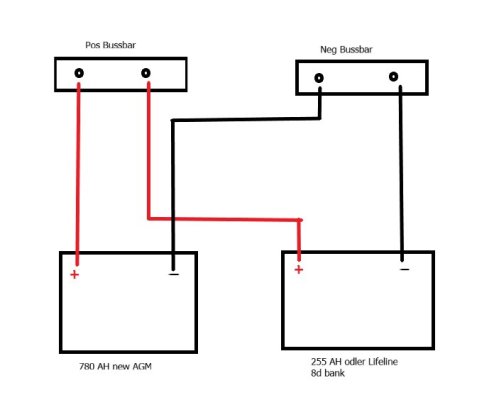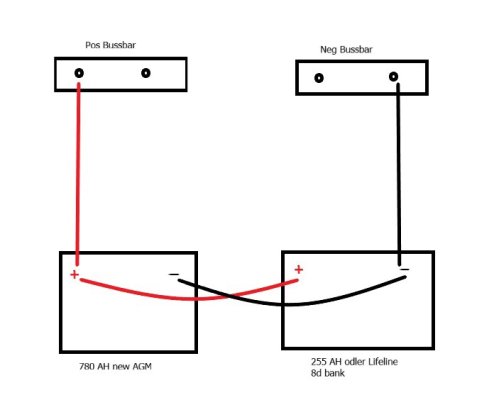dhays
Guru
- Joined
- May 26, 2015
- Messages
- 9,045
- Location
- United States
- Vessel Name
- Kinship
- Vessel Make
- North Pacific 43
I am considering combining my house bank with my thruster bank. I asked this a year ago, but it was lost amidst other issues.
House bank is about 780AH made up of relatively new 4 x 390AH 6v AGM batteries. The thruster bank is 2 Lifeline 8D batteries at least 4 years old that would have been 500AH when new.
I know that it is considered a “bad idea” to combine batteries of different ages and combine batteries that aren’t identical.
So, here is one idea. What affect would there be if I combined them this way. How would each battery bank be deplete? Same AH from each or equal percentage from each or what?

This would make one bank. It would be easier to measure the total AH use from the this bank.

House bank is about 780AH made up of relatively new 4 x 390AH 6v AGM batteries. The thruster bank is 2 Lifeline 8D batteries at least 4 years old that would have been 500AH when new.
I know that it is considered a “bad idea” to combine batteries of different ages and combine batteries that aren’t identical.
So, here is one idea. What affect would there be if I combined them this way. How would each battery bank be deplete? Same AH from each or equal percentage from each or what?

This would make one bank. It would be easier to measure the total AH use from the this bank.


